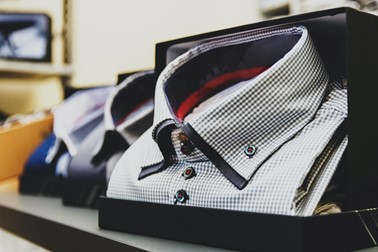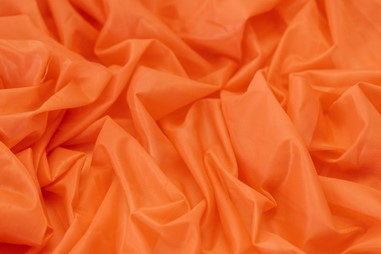
Introduction to Choosing Non-Stretch and Stretch Fabrics for Cosplay
Making your own cosplay can be fun and exciting. Whether sewing by hand, or using a sewing machine, many cosplayers tend to learn through experience. We can use clothing we already have, second-hand garments, or buy brand new pieces to adapt to our needs.
Let’s discuss making clothes from scratch with brand-new fabric.
When you walk into a fabric store looking for the right materials, how do you select them?
I spent years walking through the aisles and picking up whatever matched my color choice for the most affordable price. Really often, that was Broadcloth polyester, the cheapest option in Joann Fabrics. It comes in every color, is really easy to work with, but can be difficult to wear depending on the clothing item.

Broadcloth is thin and breathable but has no stretch whatsoever. This is a great fabric for items that don’t cover highly mobile parts of your body. Maybe a cape, a skirt/dress, or a simple shirt with lose sleeves. Broadcloth does not work well for anything tight or formfitting. Given that it comes in almost any color and is super cheap, it’s a really good choice for parts that you know won’t be constricted by the lack of flexibility.

Muslin cotton is another affordable non-stretch fabric. In addition to pieces that don’t need flexibility, fabrics like this can be used for embroideries, accessories, or mock-ups. Alternatively add a little shine to your pieces with something like Cotton Sateen.

It’s always good to have some cheap non-stretch fabrics on hand. They work well for tons of things and you might find a lot of reasons to use scraps in a pinch.
For clothing that fits tighter or is worn in a place with high mobility, a stretch fabric is best. There are two types of stretch fabric, 2-way and 4-way. These refer to the number of directions they will stretch which is determined by the way they are woven. You might already be familiar with 4-way stretch fabrics like Lycra and Spandex which are often used for body suits and tights. In the craft store, most fabrics that say “Knit” in the title have some form of stretch.
Sewing a garment can feel like such a huge accomplishment, although not lacking frustrations. When choosing a fabric, you also want to keep in mind that some are easier to work with than others. Non-stretch fabrics are perfect for beginners, while stretchy fabrics can be a headache.
I like the idea of buying fabric online because of the huge selection, but for beginners I would definitely recommend going to a fabric store to see and feel the options in person. You could also plan ahead and order swatches for a couple of dollars. If you want to order online later, take notes. Observe how each fabric stretches and moves so that you can reference them later when making decisions. In-fact you don’t even need to know what a particular fabric is called to use it. As long as you have the opportunity to choose it in person, you can pick just about anything.
Here are some questions you can ask as you shop for fabrics:
- Is the flow and movement right for your character? Is that even important to you?
- Is it non-stretch, 2-way stretch, or 4-way stretch?
- Will it accommodate the type of clothing you need to make without tearing?
- Is it too stretchy for you to work with? Do you have enough experience with stretchy fabric, or think you might be up for the challenge?
- Is it affordable? The more length you need the pricier this gets.
In the future we can discuss more fabric types and techniques. Doing research before making purchases is always your best bet. On this topic, I really like this video by Youtube creator MangoSirene:
Happy crafting!



Recent Comments